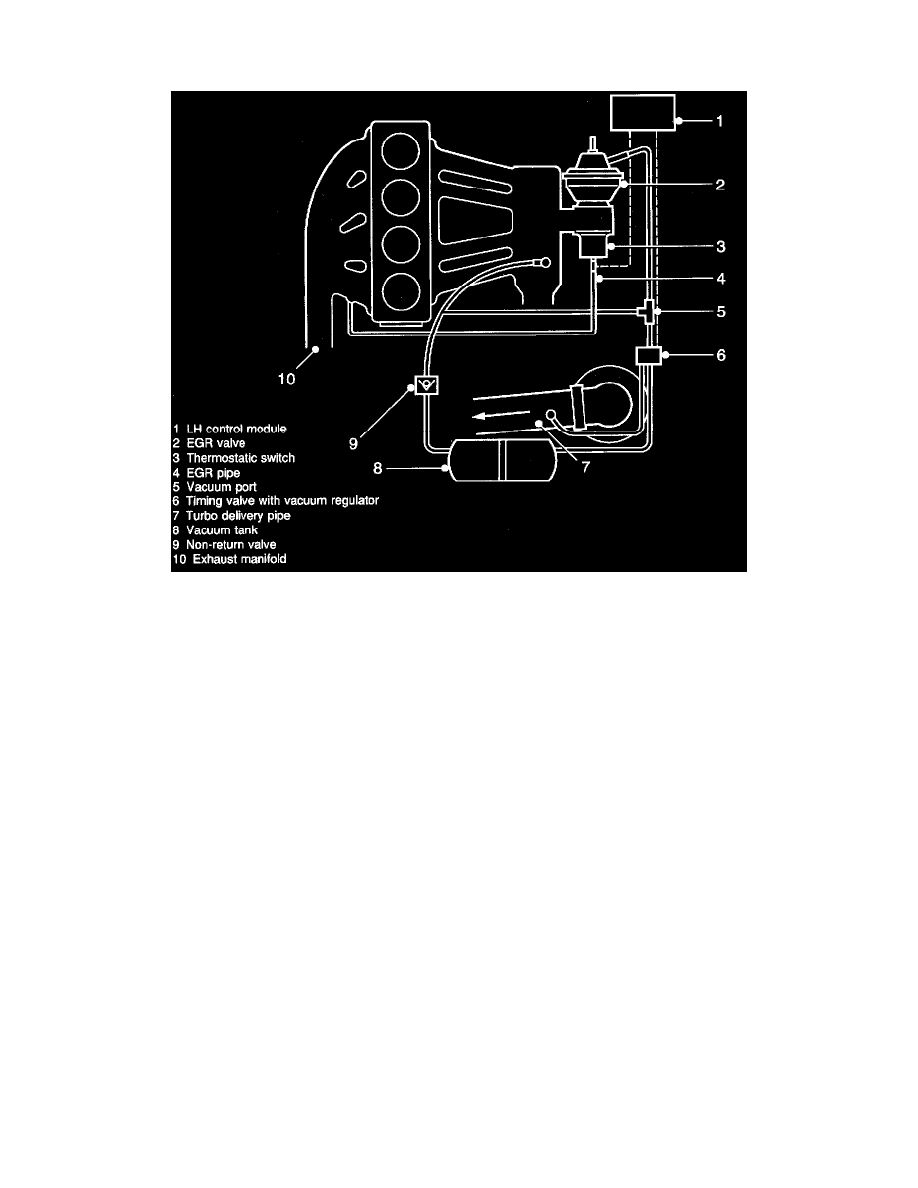9000 L4-1985cc 2.0L DOHC Turbo EFI (1987)

Exhaust Gas Recirculation: Description and Operation
Electronic EGR system
General
To meet stricter legal requirements in California, an EGR system with electronic control was introduced for M1990. This EGR system is fitted only to
model year 1990 cars.
The system consists of a timing valve with vacuum regulator, a vacuum tank with non-return valve and a thermostatic switch. The thermostatic switch
supplies information to the LH control module which in its turn controls the timing valve. The timing valve applies varying control pressure to the
EGR valve.
Light load
On the basis of information on load, engine speed and coolant temperature, the control module sends pulses to a timing valve by means of which the
desired amount of exhaust gas is recirculated. The vacuum valve ensures that the vacuum in the system is maintained at about -200 mbar.
Acceleration
The LH control module actuates the timing valve in order to open the EGR valve, but the pressure in the intake manifold is decreasing to 0. This
means that no vacuum is present and the EGR valve cannot be opened. For this reason a vacuum tank is incorporated in the system so that control
pressure is available for 30-40 seconds.
Full load
The EGR valve should be kept closed but on engines equipped with a turbocharger the EGR valve's built-in springs are not strong enough to withstand
the high pressure that is generated. As a result, turbocharged engines are fitted with a vacuum port which diverts the over pressure from the intake
manifold to the diaphragm of the EGR valve. This overpressure helps to keep the EGR valve closed.
